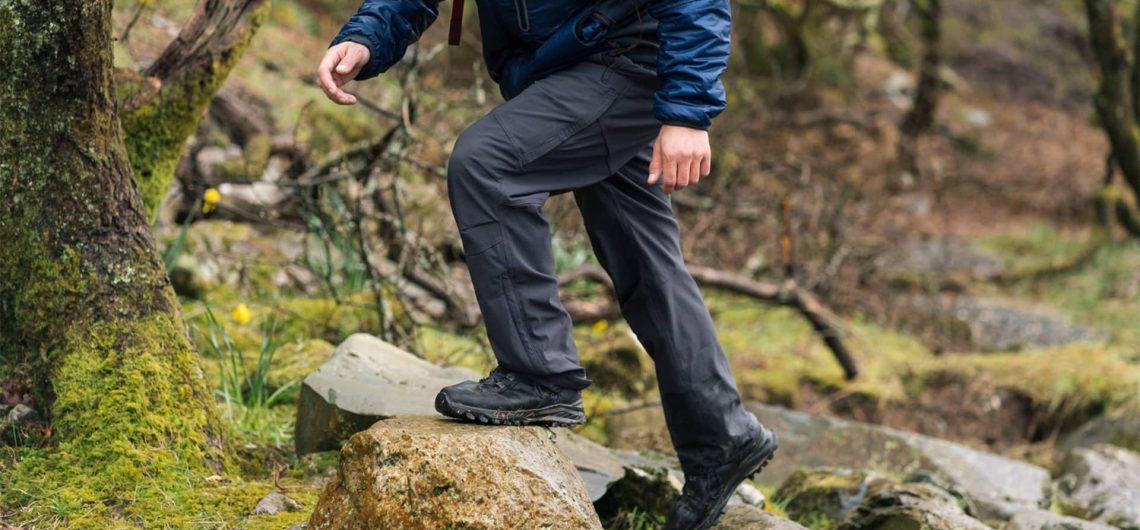On Mount Kilimanjaro, hiking pants are not just clothing, they are more than that; they are a critical component of your gear, worn for hours depending on the route you are on, each day, during your 5- to 9-day trek through diverse ecological zones. Here, pants are not a fashion statement, they are a survival tactic to manoeuvre the different ecological zones, the higher you climb. From the humid rainforests at the base to the freezing, wind-swept arctic summit, Kilimanjaro presents a wide range of temperatures and weather conditions, requiring pants that are versatile, comfortable, and functional. This comprehensive guide explores the importance of hiking pants for Kilimanjaro, detailing the key features to look for, providing top recommendations, and briefly touching on other types of pants needed for a complete climbing wardrobe.
- Research suggests hiking pants should be lightweight, durable, and convertible for versatility across Kilimanjaro’s diverse climates.
- It seems likely that synthetic fabrics like nylon or polyester, with stretch for mobility, are best for comfort and quick drying.
- The evidence leans toward pants with reinforced knees, secure pockets, and high UPF for sun protection at high altitudes.
Understanding the Climatic Challenges of Kilimanjaro
Mount Kilimanjaro is unique in that it can be climbed without technical mountaineering skills, making it accessible to a broad range of adventurers. However, the climb is far from easy, with significant physical and mental demands due to its altitude and varying climates. The trek takes you through five ecological zones: cultivated land, rainforest, heath, alpine desert, and arctic summit. Each zone has its own challenges, from dense vegetation and mud in the rainforest (where temperatures can reach 30°C/86°F) to thin air and sub-zero temperatures near the summit (often below -10°C/14°F).
During the climb, you’ll experience hot, humid conditions in the lower zones, requiring breathable, quick-drying pants. As you ascend, the terrain becomes rockier and more exposed, with cooler temperatures and stronger winds, necessitating durable, wind-resistant pants. The summit push, typically starting at midnight, involves extreme cold and potential snow, where layering becomes essential. Your hiking pants must adapt to these changes, providing comfort, protection, and mobility throughout.
Why Hiking Pants Are Essential
Hiking pants are your primary garment for daily trekking on Kilimanjaro, worn for 6-10 hours each day. They protect your legs from sun exposure, insect bites, and abrasions from rough terrain, while also ensuring comfort during long hours of movement. The wrong pants can lead to chafing, discomfort, or even hypothermia if they get wet and fail to dry quickly, especially during rest stops in colder zones. Conversely, the right pair enhances your endurance, reduces fatigue, and makes the climb more enjoyable.
Key considerations for hiking pants include:
- Material: Synthetic fabrics like nylon or polyester are ideal for their lightweight, quick-drying, and moisture-wicking properties. Merino wool blends are also excellent for warmth and odor resistance but may be heavier and more expensive. Avoid cotton, as it absorbs sweat, dries slowly, and can leave you cold and clammy.
- Fit and Comfort: Pants should fit snugly but not tightly, allowing for layering underneath (e.g., long underwear or fleece-lined tights). A relaxed fit with stretchable fabric (e.g., with spandex) ensures freedom of movement, crucial for steep ascents and descents.
- Convertibility: Convertible pants, with zippers at the knees, are highly recommended. They allow you to switch between pants and shorts depending on the temperature, reducing the need to pack extra clothing. This feature is particularly useful in the warmer lower zones, where temperatures can reach 25-30°C, and at higher altitudes where you might want shorts for brief periods of warmth.
- Durability: Kilimanjaro’s trails can be rough, with sharp rocks and abrasive surfaces. Look for pants with reinforced knees and seats to withstand daily wear and tear, ensuring they last the entire trek without tearing or wearing out.
- Pockets: Deep, secure pockets are essential for storing small essentials like snacks, maps, or cameras. Zipped pockets add an extra layer of security, especially for valuables, preventing loss during strenuous activity.
- Sun Protection: At high altitudes, UV rays are stronger, and you’ll be exposed for long periods. Pants with a high UPF (Ultraviolet Protection Factor) rating, ideally 50+, help protect your skin from sunburn, reducing the need for additional sunscreen on your legs.
- Water Resistance: While not as critical as for waterproof pants, a durable water-repellent (DWR) finish can help shed light rain, morning dew, or splashes from crossing streams, keeping you dry without needing to change into rain gear immediately.
- Breathability: Good ventilation is key to preventing overheating, especially during strenuous ascents. Look for pants with mesh panels, ventilated designs, or lightweight fabrics that allow air circulation.
- Weight: Since you’ll be carrying all your gear, lightweight pants are preferable. They should also pack down small for storage in your duffel bag, making them easy to manage during the climb.
Additional Considerations for Kilimanjaro Hiking Pants
Beyond these features, consider the cultural context. Tanzania is a conservative country, and wearing modest clothing, such as full-length pants, is respectful, especially when interacting with local guides, porters, or villagers. Shorts, while optional for warmer days, are less practical for protection and may not be suitable in certain settings.
Insect protection is another factor, particularly in the lower rainforest zones, where mosquitoes and ticks can be present. Treating your pants with insect repellent or choosing models with built-in insect repellent can add an extra layer of defense, though long pants inherently provide some protection.
Chafing is a common issue on long treks, especially if pants are made from coarse materials or don’t fit well. Look for pants with soft, seamless interiors and flatlock seams to minimize irritation, especially under backpack straps. Testing your pants on practice hikes before the climb is highly recommended to ensure comfort and functionality.
Top Recommendations for Hiking Pants
Based on expert recommendations and climber reviews, here are some of the best hiking pants for climbing Kilimanjaro, available at retailers like REI and Backcountry:
| Brand and Model | Key Features | Best For |
|---|---|---|
| Prana Stretch Zion Pants | Slim fit, stretchy fabric, roll-up leg snaps, mesh pockets, adjustable waistband | Trekkers preferring a slimmer, versatile fit |
| REI Sahara Convertible Pant | Nylon/spandex blend, 50 UPF, DWR finish, removable legs | Budget-conscious climbers wanting reliability |
| The North Face Paramount Active Convertible Pants | Convertible design, stretch fabric, multiple pockets, recycled materials | Eco-conscious trekkers seeking durability |
| Columbia Silver Ridge Convertible Pants | Omni-Shade sun protection, lightweight, quick-drying, reinforced knees | Climbers prioritizing sun protection and comfort |
| Arc’teryx Lefroy Pants | Stretch-woven nylon, water-resistant, breathable, articulated fit, multiple pockets | Serious hikers wanting premium performance |
| Fjällräven Vidda Pro Trousers | Waxed cotton canvas, windproof, water-resistant, comfortable fit, multiple pockets | Trekkers preferring a rugged, traditional style |
Each of these options has its strengths, so choose based on your preferences for fit, features, and budget. Testing them on practice hikes before your climb is highly recommended to ensure comfort and functionality, and consider breaking in new pants to avoid stiffness or discomfort from seams.
Brief Guide to Other Pants Needed for Kilimanjaro
While hiking pants are the focus, you’ll also need other types of pants to handle specific conditions on Kilimanjaro:
- Waterproof Pants: Essential for rain and wind protection, especially during the summit push. Look for lightweight, breathable options with full side zips for easy on-and-off, such as the REI Rainier Rain Pants or Black Diamond Fineline Full Zip Rain Pant, available at REI.
- Fleece Pants: Provide warmth for cold evenings at camp or summit night. Midweight fleece pants, like the Mountain Hardwear Polartec Fleece Pants, are usually sufficient, offering plush comfort and secure zippered pockets, available at Backcountry.
- Long Underwear: Also known as base layer bottoms, these are tight-fitting pants made from merino wool or synthetic materials that wick moisture and provide additional warmth. Wear them under hiking pants for colder days or summit night, such as the Icebreaker 260 Tech Leggings or Patagonia Capilene Bottom, available at REI.
- Shorts (Optional): Useful for very warm days in the lower zones, choose lightweight, quick-drying shorts with good sun protection, like the PrAna Stretch Zion Shorts, available at Backcountry. However, full-length pants are generally recommended for better protection.
- Underwear: Bring moisture-wicking, quick-drying underwear made from synthetic or merino wool materials, such as Smartwool Merino Sport Briefs or Exofficio Give-N-Go Sport Mesh Boxer Brief, available at REI. Avoid cotton to prevent chafing and discomfort, and ensure a snug fit to avoid pressure from backpack waist straps.
By packing these additional pants, you’ll be prepared for all weather conditions and temperature changes on Kilimanjaro, ensuring a safe and enjoyable climb.
- Important Kilimanjaro inner wear, shorts and underwear
- Rain Pants and Rain Jackets, the must-have rain gear from climbing Kilimanjaro, Mount Kenya, Mount Meru and Rwenzori
- The 5 best rain pants for climbing Kilimanjaro
- What to Wear Each Day when Climbing Mount Kilimanjaro
- How to Layer for Mount Kilimanjaro treks
![]()

